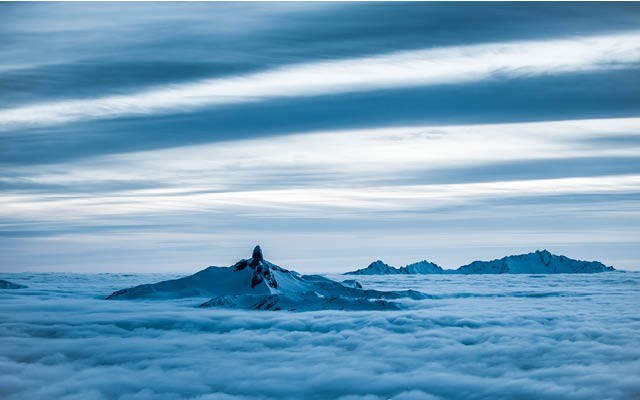The fist rays of winter sun strike the Tantalus Range, and as the morning light pierces the cold steep rock faces of Mt. Garibaldi and Black Tusk, the daily alpine warming cycle begins up and down the Sea to Sky corridor.
This daily natural happening caught the attention of a young geologist named Bill Mathews in the 1930s, and some years later another geology keener named Bob Turner was similarly fascinated by the natural wonders of the rocks and landscapes between the mouth of Howe Sound and the peak of Blackcomb.
Between the two of them a significant amount of geological knowledge has been accumulated about the Sea to Sky corridor.
Mathews passed away in 2003, but thankfully, Turner is still with us sharing his vast knowledge of the region's geological make-up.
Turner is with the Geological Survey of Canada, and recently he shared a presentation at the Brackendale Art Gallery called A Geologist's View of Sea to Sky Country.
"Our earth is 4.5 billion years old," he says kicking off his presentation. "B.C. rocks are one-third that age."
He explains that just 15,000 years ago Squamish was buried under ice 1.5-kilometres thick. Just the tips of the tallest mountains around us protruded above the top of the ice sheet smothering the region. To illustrate this Turner shows his audience a scenic mountain photo taken between Whistler and Squamish — a clear line geologists universally agree marks the height point of the ice in the last ice age.
This information Turner shares is built from research done by Mathews. During his college years, Mathews was a student assistant for the Geological Survey of Canada and a trainer with the Alpine Club of Canada. His interest in geology specific to the Sea to Sky area hit a high point in 1948 when he was writing a dissertation called Geology of the Mount Garibaldi map-area, southwestern British Columbia.
He went on to become a professor teaching at The University of California, Berkley and then later he was hired by UBC. Mathews also wrote a guidebook in 1975 about the geology of Garibaldi Provincial Park, then a second book on the geology of southern B.C. It was published a few years after his death.
Mathews was interested in volcanoes, glaciers, geomorphology, landslides, hydrogeology, stratigraphy, coal and mineral deposits. He shared what he learned — liberally.
After praising the volume of work left behind by Mathews, Turner carries on with his presentation in front of a packed house of people from Whistler and Squamish, young and old — people interested in rocks, glaciers and mountains.
"The North Shore mountains are rising," Turner explains as he points to a photo taken from Vancouver's west side looking across Burrard Inlet.
He says the young mountains of B.C. are on the rise because the Pacific Plate is slipping under the North American Plate. This reality is a key part of volcanic activity happening along the west coast of North America, but Turner is certain the Sea to Sky volcanoes aren't on the verge of rumbling to life.
"There are no vital signs around Garibaldi," he says. "There aren't any hot springs, no hot spots."
He goes on to reassure the audience the other volcanoes in the region are also dormant then describes how The Stawamus Chief in Squamish was formed from a molten deposit likely five to 10 km below the surface of the earth. Turner also explains the basalt columns came to be on display beside Highway 99 just south of Whistler. They were created under ground in an area geologists call the upper mantle — the uniform rock formations created by shrinkage cracks. The rock was once molten, says Turner, and as the hot liquid slowly cooled it formed into the spectacular cube shapes we think little of as we cruise by on Highway 99.
Like Mathews, Turner clearly enjoys sharing what he knows as he presses on with his talk at the Brackendale Art Gallery. He talks more on Sea to Sky glaciers, river formation, how valleys were created and where he thinks the upper limit of Howe Sound will exist many years from now as the river systems in the corridor continue to transport sand from the tops of regional watersheds to the lowest point in the natural water system.
Also like Mathews, Turner is an author. Turner's work can be further studied in Vancouver, City on the Edge and GeoTour Sea to Sky. Both works focus on the geology and landscapes of the region. GeoTour Sea to Sky is focused on the geological wonders between Vancouver and Whistler.
As Turner finishes up his presentation the keenest audience members pepper him with questions. Outside the temperature is dropping. Darkness has set in. Overnight freezing has begun in the alpine and on the cold rock slopes of Mt. Garibaldi and Black Tusk. In just eight hours the sun will rise and begin the daily warming cycle anew.




